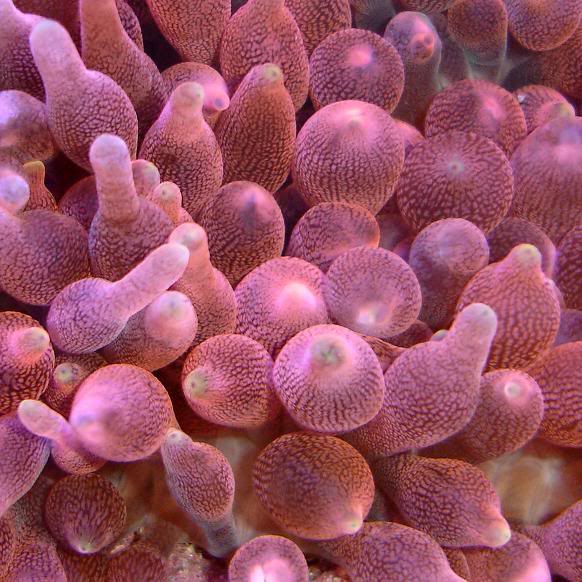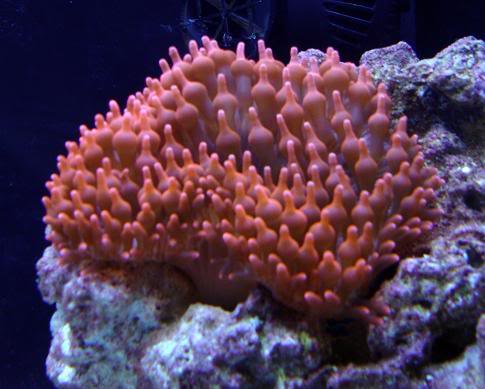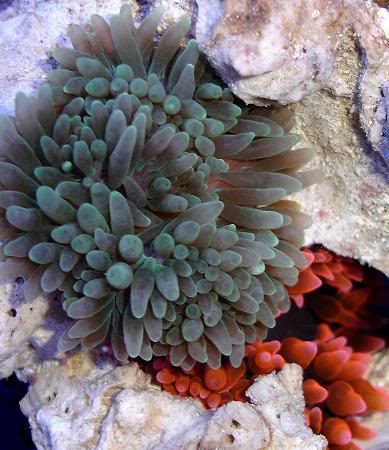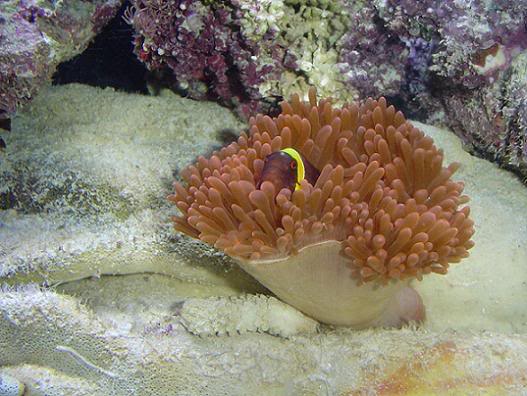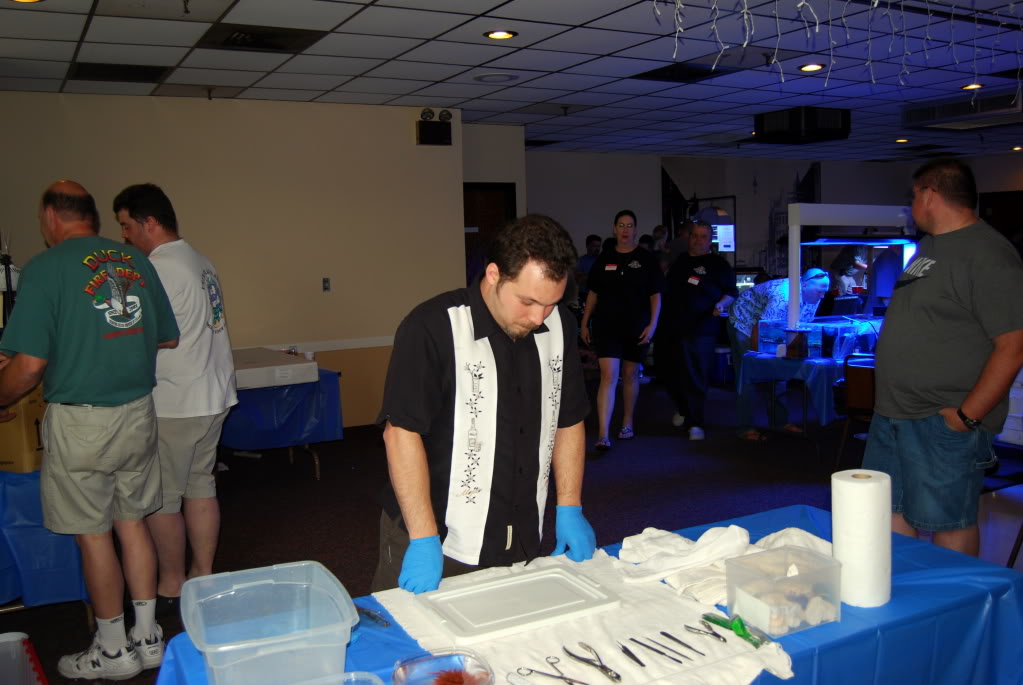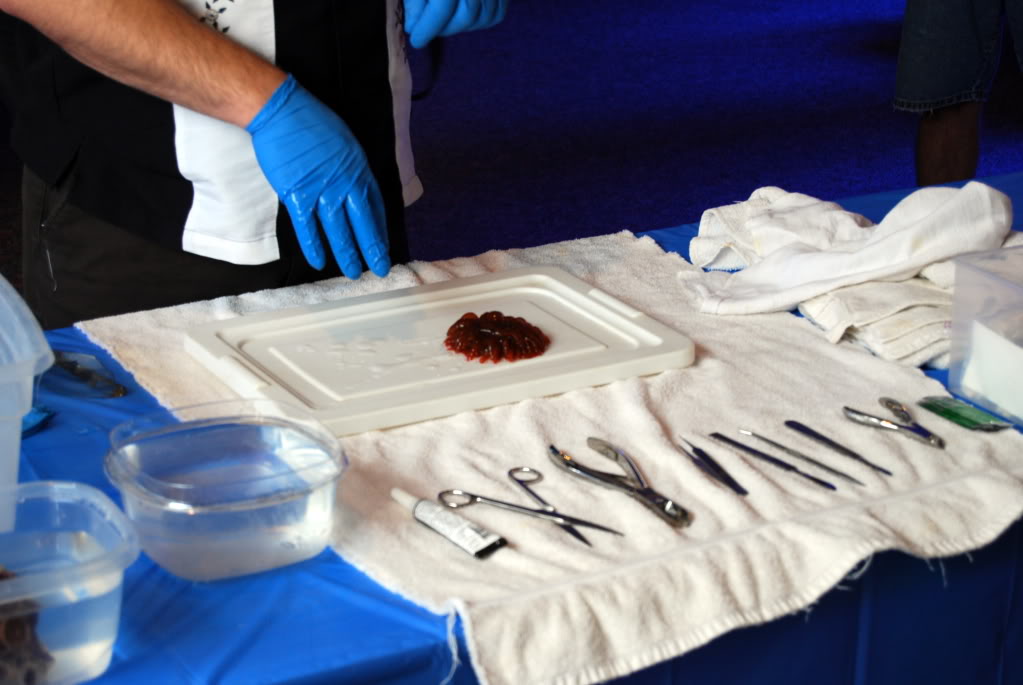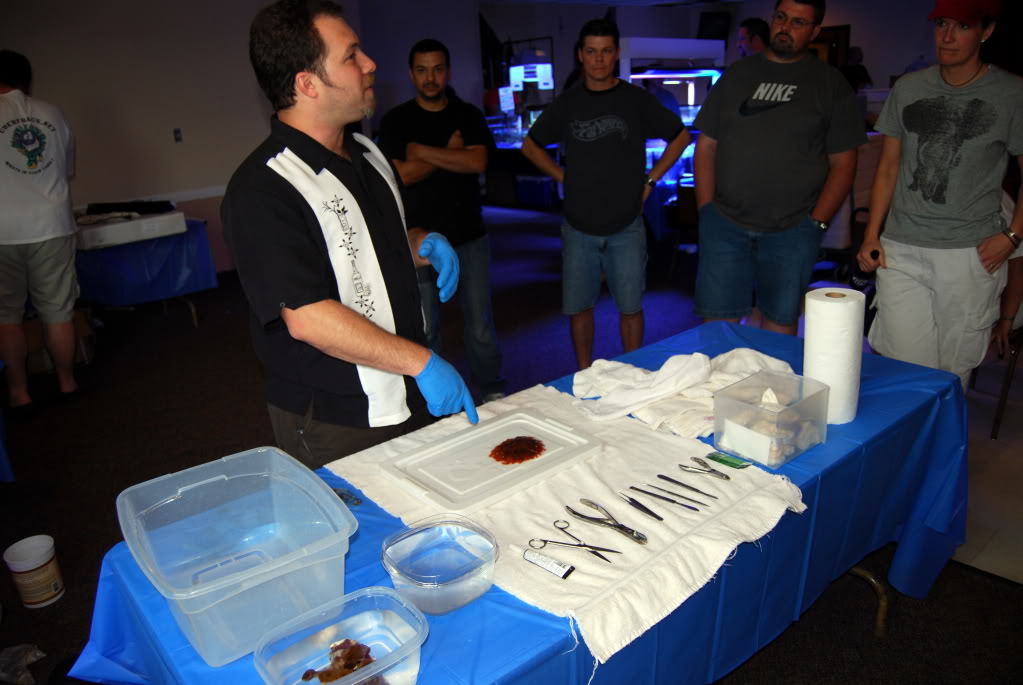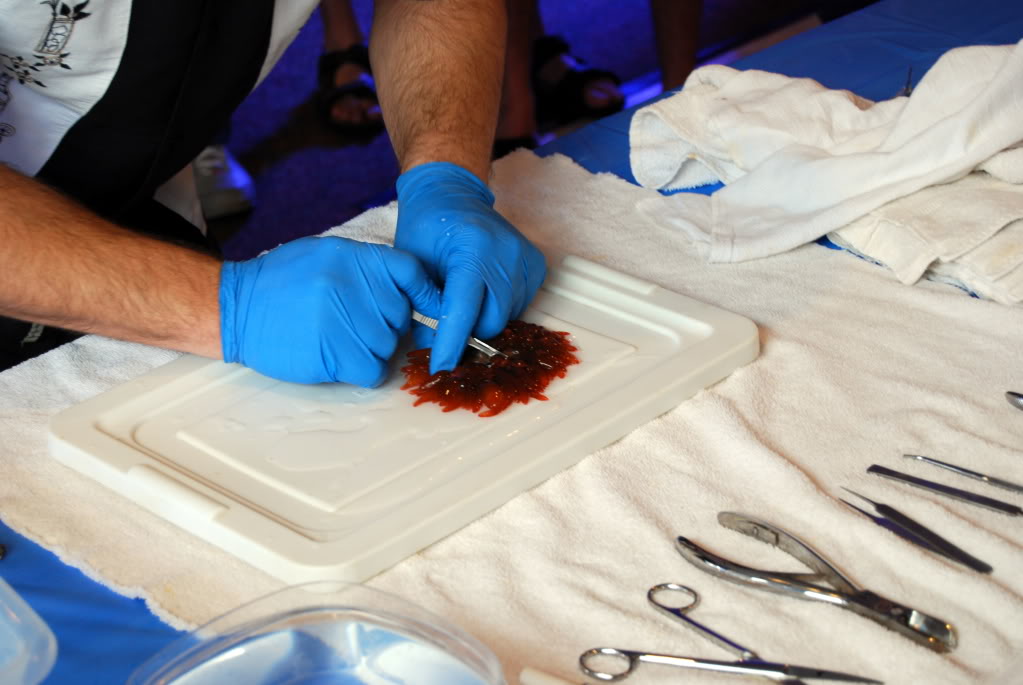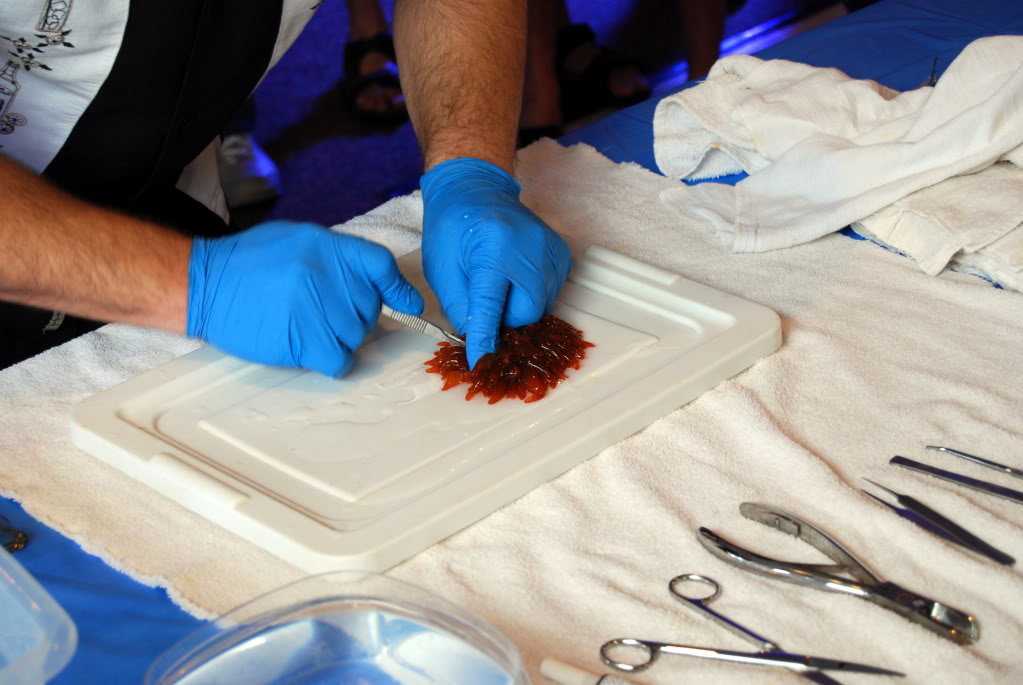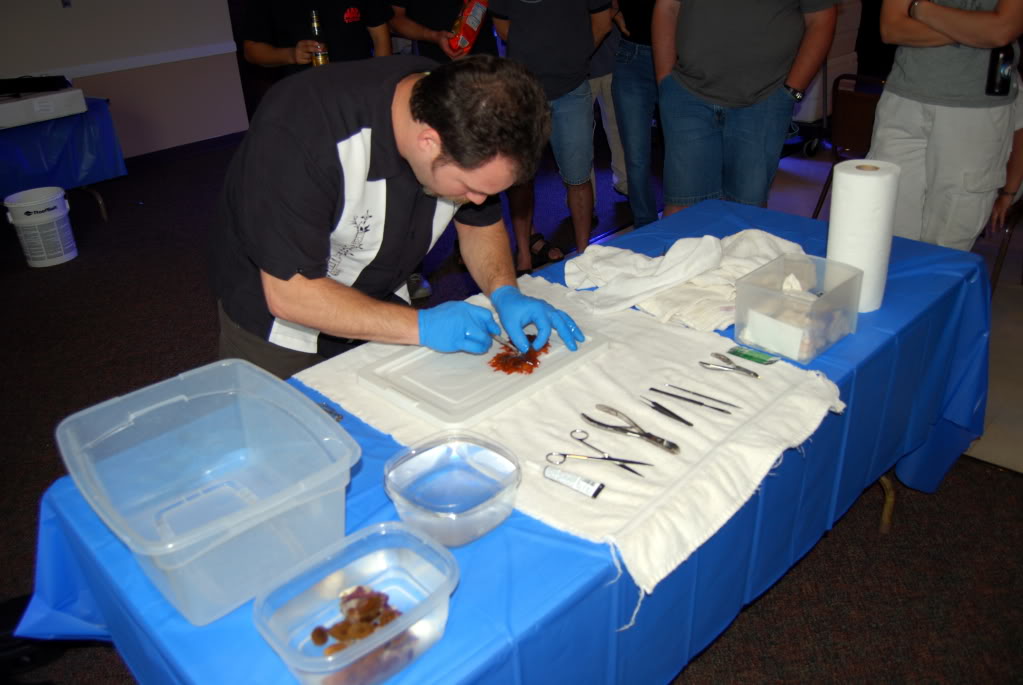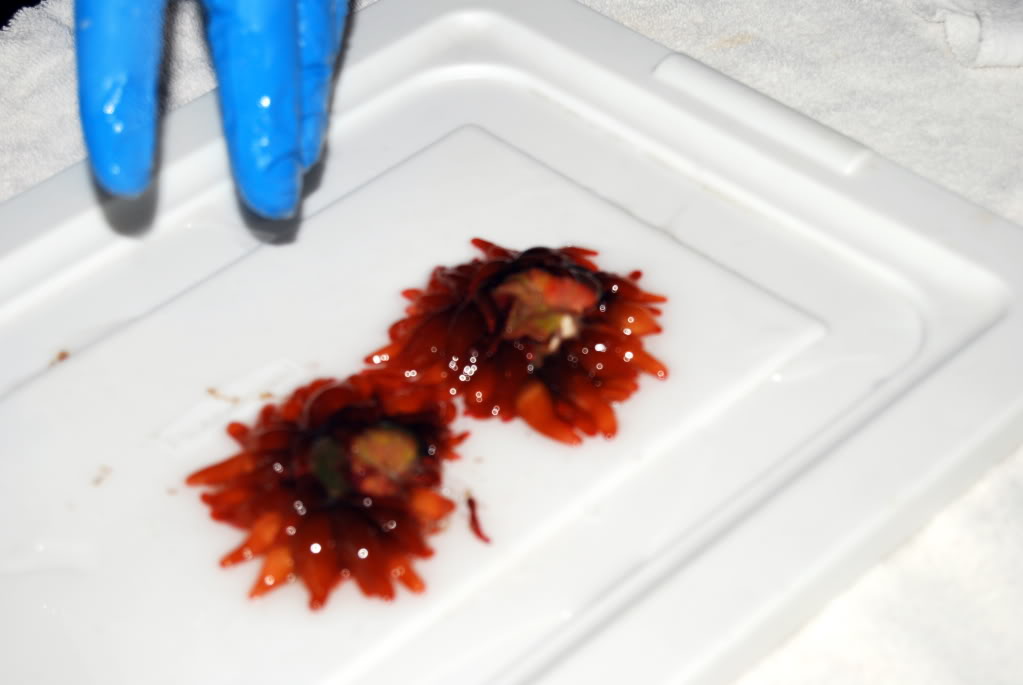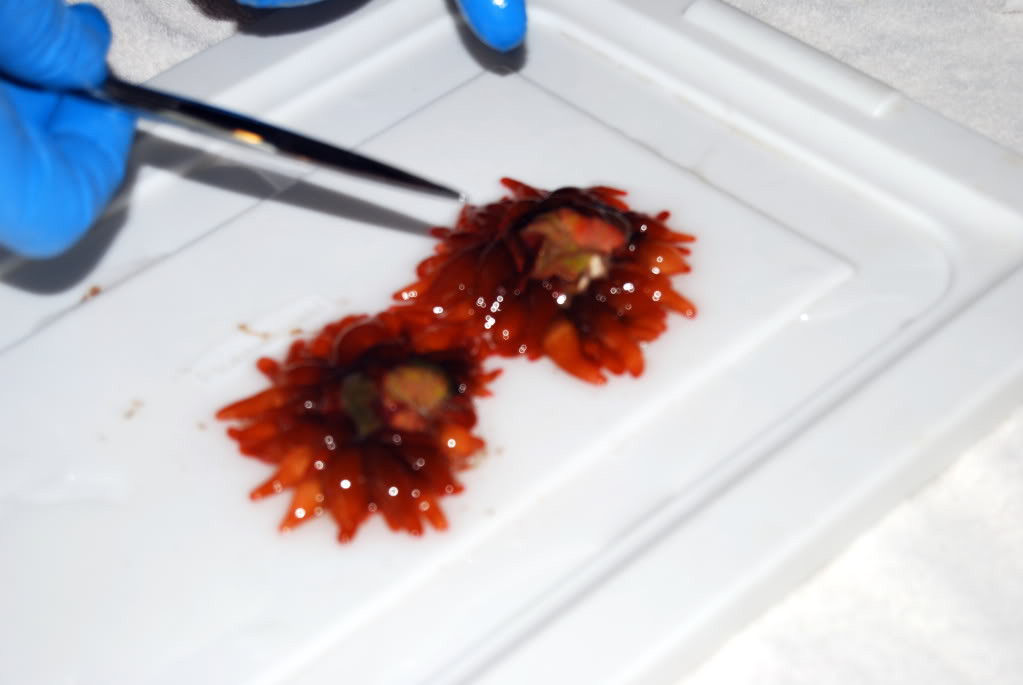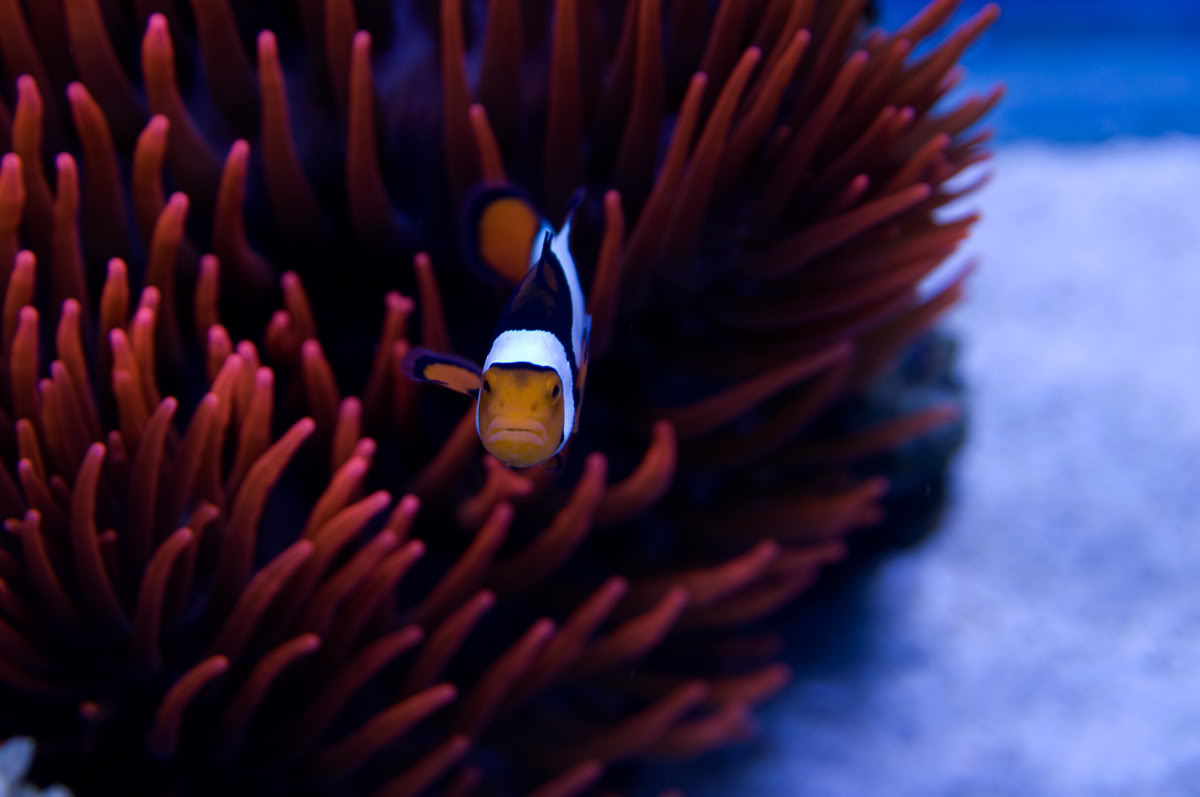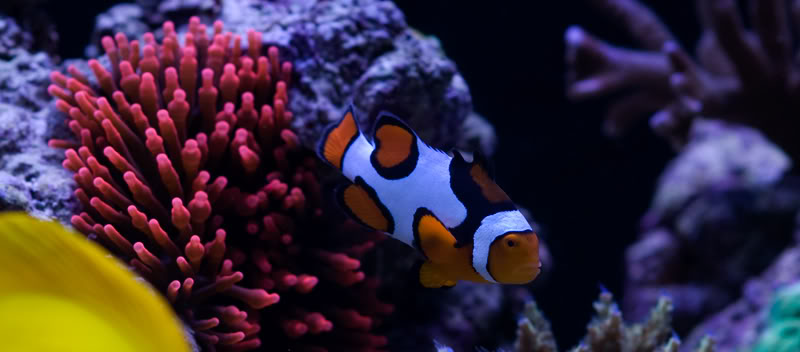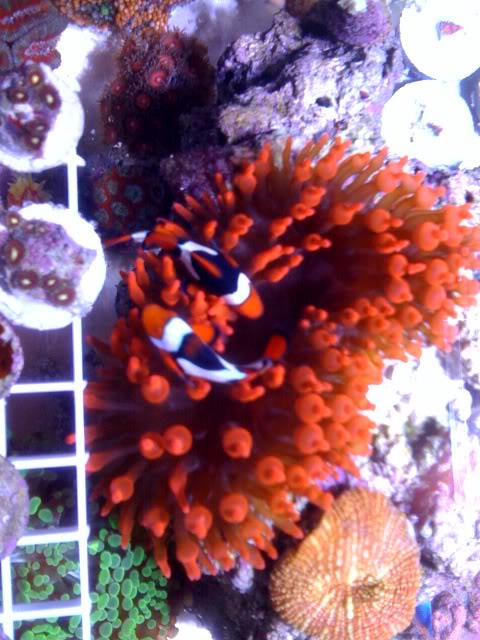The bubble tip anemone has been one of my favorite reef invertebrates. I have owned many different types over the last 5 years with each variation displaying a different temperament and tank tolerance. Initially I purchased one to keep my clowfnish happy, but I quickly grew to appreciate the anemone more than the clown. And so began my interest with the...
Entacmaea quadricolor "Bubble Tip Anemone"
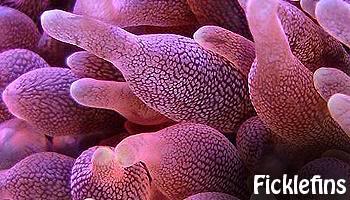
Lighting:
- The optimum light situation for a BTA is Medium/High light. A BTA will let you know what light intensity it prefers by moving itself around the tank until it reaches it's selected setting on it's own.
- Minimum light requirements would be a high amount of PC wattage per gallon, Metal Halides, or T5 lights.
Flow:
- Medium/High amount of flow, but not direct flow as this may cause the anemone to close up and/or wander the tank in search of calmer waters.
- Powerheads can cause a problem for BTAs. With their long flowing tentacles anemones can easily find themselves being sucked into pumps/powerheads which can often times lead to their death. Covering a powerhead with foam or fine netting can provide added insurance in preventing this type of demise.
Feeding:
- The preferred food for most BTA's are meaty items such as krill or silversides, but they will accept smaller foods like mysis and even pellets (how I use to do it). Enriching the food in something like selcon will also help to supplement the anemone's diet. Anemone's will spit up any uneaten foods such as whole silversides, so limit the size of the item you are feeding until you are more comfortable with your particular anemones capacity.
- Feeding also promotes growth and can aid in bringing BTA's back to health in cases of bleaching. Many hobbyists will feed their anemones to promote growth and/or to initiate propagation through division.
Placement:
- It is always best to start a newly introduced anemone off in a low/medium flow area, with it's foot in a crevise, and if possible in or near an area you want it to stay in.
- Anemones will move around the tank until they find a location that best suits their particular needs. Sometimes this means that it may not be the most visible location in the tank, but moving anemones to a new location will only build on the stress of acclimation and will not guarantee that it will stay. So allow your anemones to move around the tank, and if they setup in a location that is to your liking then try to encourage them to stay through feedings.
Propagation:
- On most occasions an anemone will divide on its own, but the process can be helped along by the hobbyist. During division an anemone may move from its established location and may look stresed while it is splitting into two. After an anemone divides it is important to try and minimize the disturbance to the aquariums water quality so it may be helpful to run activated carbon or do a water change. Described below is a few methods and observations of anemone propagation.
- Stress relates division: Some hobbyists have reported that their anemone split during a period of stress for the BTA. This can happen right off the bat during the process of acclimation, during a minor tank issue, or on purpose via hobbyist manipulation. Personally I have never been an advocate of purposefully stressing an anemone to induce division so I can not vouch for any techniques on how to accomplish this.
- Food/size related division: One of the safest, less stressful, and most utilized methods of encouraging an anemone to divide is through feeding.
- Manual division: A method that is growing in popularity amongst hobbyist is the physical cutting of anemones. This is done by cutting the anemone, with a blade or a pair of scissors, in half leaving a part of the mouth on either side. Video courtesy of Chip (flowerseller), a member of my local reef club. [youtube=http://www.youtube.com/watch?v=C5tDIoLROyA]Flowerseller shows how to split a RBTA[/youtube]
More of Chip's videos are available here : http://www.youtube.com/user/flowersellers
Origins:
Rarity:
- Anemones in general are not a rare invertebrate, but some variations in color can be difficult to find and may fetch a decent price.
ID Confusions:
- There are several types of anemones out there and often times it can be difficult to distinguish one from the other. More on distinguishing characteristics later.
Other info:
- In addition to powerheads, I've had a peppermint shrimp develop a taste for anemone tentacles. The shrimp would go up to the anemone, snip off a tentacle, and retreat to the back of the rock work.
---------------------------------------------------------------------------------
Don't forget, these spotlights are only as strong as the feedback and pics we get from you people out there. So please, post a comment, a pic, or a question.
---------------------------------------------------------------------------------
R2R has organized all the spotlights into a single forum so feel free to post pics, comments, or questions:
R2R Spotlight Series
Entacmaea quadricolor "Bubble Tip Anemone"

Lighting:
- The optimum light situation for a BTA is Medium/High light. A BTA will let you know what light intensity it prefers by moving itself around the tank until it reaches it's selected setting on it's own.
- Minimum light requirements would be a high amount of PC wattage per gallon, Metal Halides, or T5 lights.
Flow:
- Medium/High amount of flow, but not direct flow as this may cause the anemone to close up and/or wander the tank in search of calmer waters.
- Powerheads can cause a problem for BTAs. With their long flowing tentacles anemones can easily find themselves being sucked into pumps/powerheads which can often times lead to their death. Covering a powerhead with foam or fine netting can provide added insurance in preventing this type of demise.
Feeding:
- The preferred food for most BTA's are meaty items such as krill or silversides, but they will accept smaller foods like mysis and even pellets (how I use to do it). Enriching the food in something like selcon will also help to supplement the anemone's diet. Anemone's will spit up any uneaten foods such as whole silversides, so limit the size of the item you are feeding until you are more comfortable with your particular anemones capacity.
- Feeding also promotes growth and can aid in bringing BTA's back to health in cases of bleaching. Many hobbyists will feed their anemones to promote growth and/or to initiate propagation through division.
Placement:
- It is always best to start a newly introduced anemone off in a low/medium flow area, with it's foot in a crevise, and if possible in or near an area you want it to stay in.
- Anemones will move around the tank until they find a location that best suits their particular needs. Sometimes this means that it may not be the most visible location in the tank, but moving anemones to a new location will only build on the stress of acclimation and will not guarantee that it will stay. So allow your anemones to move around the tank, and if they setup in a location that is to your liking then try to encourage them to stay through feedings.
Propagation:
- On most occasions an anemone will divide on its own, but the process can be helped along by the hobbyist. During division an anemone may move from its established location and may look stresed while it is splitting into two. After an anemone divides it is important to try and minimize the disturbance to the aquariums water quality so it may be helpful to run activated carbon or do a water change. Described below is a few methods and observations of anemone propagation.
- Stress relates division: Some hobbyists have reported that their anemone split during a period of stress for the BTA. This can happen right off the bat during the process of acclimation, during a minor tank issue, or on purpose via hobbyist manipulation. Personally I have never been an advocate of purposefully stressing an anemone to induce division so I can not vouch for any techniques on how to accomplish this.
- Food/size related division: One of the safest, less stressful, and most utilized methods of encouraging an anemone to divide is through feeding.
I used feeding to trigger clones. I'd get them used to 2-3 krill every three or four days for a few weeks, then up it to 3-4 krill every other day and they'd split in 12 days. Did it three times intentionally. Not all BTA's split, though. I've heard some RBTA's (and GBTA's...) just get bigger and bigger and tend to have a stronger sting.
- Manual division: A method that is growing in popularity amongst hobbyist is the physical cutting of anemones. This is done by cutting the anemone, with a blade or a pair of scissors, in half leaving a part of the mouth on either side. Video courtesy of Chip (flowerseller), a member of my local reef club. [youtube=http://www.youtube.com/watch?v=C5tDIoLROyA]Flowerseller shows how to split a RBTA[/youtube]
More of Chip's videos are available here : http://www.youtube.com/user/flowersellers
Origins:
Rarity:
- Anemones in general are not a rare invertebrate, but some variations in color can be difficult to find and may fetch a decent price.
ID Confusions:
- There are several types of anemones out there and often times it can be difficult to distinguish one from the other. More on distinguishing characteristics later.
Other info:
- In addition to powerheads, I've had a peppermint shrimp develop a taste for anemone tentacles. The shrimp would go up to the anemone, snip off a tentacle, and retreat to the back of the rock work.
---------------------------------------------------------------------------------
Don't forget, these spotlights are only as strong as the feedback and pics we get from you people out there. So please, post a comment, a pic, or a question.
---------------------------------------------------------------------------------
R2R has organized all the spotlights into a single forum so feel free to post pics, comments, or questions:
R2R Spotlight Series




